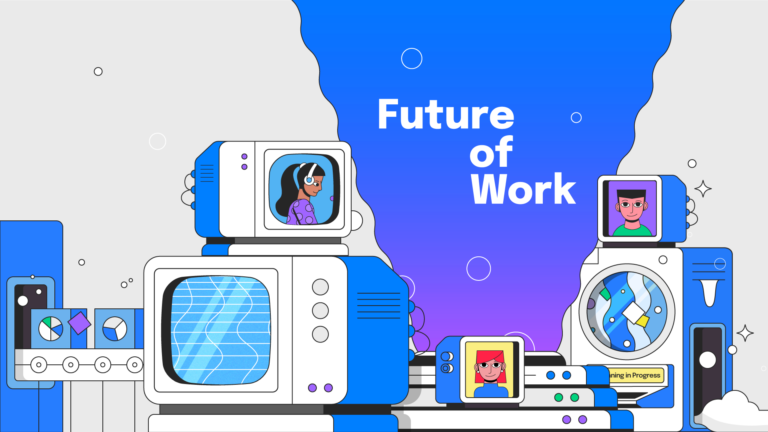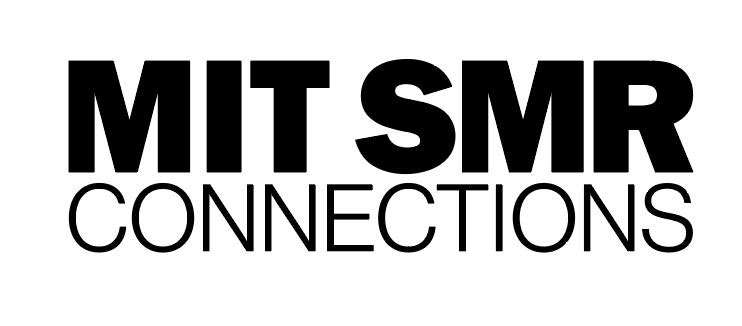When it comes to my own team, I don’t want us to get too good at our jobs.
If we can do our jobs in our sleep, then we have a problem. I don’t want to be on a team that’s asleep. I want to be on a team that’s learning. Because learning equals growth.
There’s a lot you’ll have to learn if you want to grow in any meaningful way. Think about your goals—to grow your product, to grow your skills, to grow your client base. You probably take it for granted that achieving will involve some sort of learning process. But learning isn’t automatic. In fact, the opposite is true: learning is a disruptive process. You have to get outside your comfort zone in order to learn. You must tackle new problems. Ultimately, you and your company will have to undergo some form of disruptive change. Did an individual get promoted? Their old role got disrupted. Did somebody’s breakthrough product hit the market? Watch that market get disrupted. Did two companies merge? You’ll witness disruption—positive or negative—as two corporate cultures strive to integrate. Disruption, growth, and learning go hand-in-hand.
There are countless ways to grow, but all human growth shares three common denominators: (1) it involves learning; (2) that learning involves disruption; and (3) all learning can be modeled on a rising S-shaped curve: the S Curve of Learning™ .
I developed the S Curve of Learning™ model after working with my late mentor, Dr. Clayton Christensen of Harvard University. When we formed our Disruptive Innovation Fund (DIF) in 2007, our aim was to invest, not in mere stocks and bonds, but in companies that displayed disruptive thinking. Companies bent on growing.
The genesis of DIF was the cultural trend theory pioneered by professor E. M. Rogers in the 1960s. Rogers used an X-Y line graph to model how new ideas take root and spread throughout society. But after investing alongside Christensen, I saw a more significant application. I concluded that all individuals and organizations pass through distinct phases of learning on their way to skill proficiency. At the bottom of the curve, growth is slow and effortful. A period of rapid acceleration follows. Learning builds upon itself. Resources are quickly seized and utilized. At the top lies proficiency. Resources are exhausted, the curve flattens, growth slows down again…
Slow, fast, slow—that’s how we grow.
The S Curve of Learning™ isn’t a mere abstraction. It’s a powerful tool which helps you find your location in the growth process (“You Are Here”). Finding your phase reveals what you’ll need to reach the top. Much as a topographical map tells you what to expect on unfamiliar terrain, the S Curve of Learning™ demystifies what you’ll have to do and what you can expect before you reach your goal.
When you start something new, you are at the base of the S. The grade is almost level. Growth feels slow. But knowing this—knowing that the thrill of acceleration is waiting in the wings—this will help you combat impatience and discouragement. Rest assured that you’ll accelerate into competence and confidence if you put in the effort, gain experience, and learn to leverage resources. I like to call that the “sweet spot” on the S Curve of Learning™. It’s exhilarating. And there’s a neurological component too. Whether you’re a weekend warrior on a mountain bike or a weekday warrior in a cubicle, dopamine is dopamine. The neurotransmitter that rewards success can be yours, regardless of where you grow.
But things will become more habitual and automatic at the top of the curve. The grade is nearly level again, just like at the bottom. Automatic means you’re learning less. The irony of proficiency is this: things feel slow again. Your brain is producing less feel-good chemicals. Boredom sets in.
The cure? More personal disruption! Get outside your new rut, tackle a new S curve, start growing again.
I founded my executive coaching and leadership company, Disruption Advisors, to bring the S Curve of Learning™ principle to small businesses and enterprise clients alike. I’ve studied and interviewed hundreds of S curve all-stars on my Disrupt Yourself podcast, from athletes like Zaza Pachulia to musicians like Livingston Taylor to CEOs like Shellye Archambeau. One classic example of a serial S curve climber is Sandy Stelling, VP of Transformation at Alaska Airlines. First times and slow starts more or less define Stelling’s career—as do mountaintops of proficiency. Stelling never lingers on the high plateau. She disrupts herself, finds a new S Curve of Learning, and climbs again.
Hands-on test engineering was Stelling’s launch point. I’m talking about the oily bits of planes: she helped design the Boeing 777. Then Stelling took charge of technical maintenance at Alaska Airlines in Seattle. But only after stopovers in flight IT and then airport services (“which is not a natural progression, to be honest”). Stelling moved on to spearhead customer analytics. The experience was essential when Stelling joined the transition team for Alaska’s high-profile merger with Virgin America. So Stelling knew the airport from tarmac to C suite when COVID upended Alaska’s five-year plan. Unsurprisingly, Stelling joined the fray. “I see where I plug in here,” she told the executive team, and then she plugged in. VP of Transformation is an understatement for the eponymous “air traffic controller for air traffic controllers.” Stelling is an executive who has transformed herself time and again, via personal disruption.
Maybe serial disruption is second nature to people like Sandy Stelling. But even if that’s not you, seeing where you stand on the S Curve of Learning™ can give you the same power. Take a moment right now. Think about your job experience, not as an assortment of tasks, but as a series of S Curves within the overarching S curve that is your career.
So where can you grow right now?
I recommend you look for room to grow precisely where you don’t think you need it. If you or your team are heavily weighted in proficiency, beware! Your direct reports might be getting complacent. They might even pose a flight risk. Can you help them jump in place? Think about pitching them an unfamiliar project or expanding their current role. Or you can leverage their proficiency to make connections across your company. Reports need a pipeline to new resources: specifically, the living, breathing resources who can serve as growth partners. You don’t have to micromanage. If you take a step back—even gingerly—you’ll catch that magic moment when the whole becomes greater than the sum of its parts. As Tom Rath once said, “Contribution is the sum of what grows when you are gone.”
Apropos of practicing what I preach, my reports and I are wrestling with the paradigm shift that is our now-hybrid office. My team is upskilling (e.g., we’re learning to video conference like pros). I’m sticking to what WEX Health VP of Human Resources Sherry Olson advised: “Everyone has the technology they need, regardless of where they work.” But it could still be a while before we’re in the sweet spot. Platforms aside, I also have qualitative concerns: how can I help disparate employees stay engaged? How can I make sure my team doesn’t start to fragment? How can we work inclusively when we aren’t working in person?
What better place to look for inspiration than an eminently inclusive social ritual: a barbecue. I’ve been looking at the playbook of BBQ Guys, the Louisiana outfit whose stock in trade is back-slapping backyard cuisine and entertainment al fresco. CEO Russ Wheeler finds ways to channel that neighborly vibe, hybrid office notwithstanding. Wheeler’s company-wide, town hall-style video rendezvous comes with an Ask Me Anything segment. This puts employees at ease, puts management on equal footing, and helps to foster a more inclusive corporate culture. BBQ Guys CHRO Kim Carlton also holds weekly video conference sessions where she fields employee questions and concerns. And department managers are holding hourlong 1:1 sessions to maintain employee engagement. BBQ Guys is getting its work culture right.
Another human resources guru is weathering the hybrid storm: Dave Walker, CHRO of 1-800-Contacts. Walker has come up with an inclusivity hack so clever that I can only assume it’s about to become common practice: the faux video conference. The trick: even if 90% of the team is in-office, meetings are still held via video conference; each member on-camera and at their desk. “It’s made a big difference for maintaining our close-knit work culture,” Walker says. “Individuals who are remote now feel they are a part of the team.“
Great leaders tend to be great teachers. And great teachers know it takes ingenuity—even a little disruption—to keep a group united and cooperating in difficult times. If this is a challenge you face right now, don’t forget you have influential friends: your team. They are, we are, learning machines. Your team members want to take on a fresh challenge. Learn, Leap, Repeat. Feed your team good disruption and watch the learning happen. Whether we’re learning to throw a barbecue, create a hybrid-friendly workplace, or build a Boeing 777, personal disruption is the wind beneath our wings.





